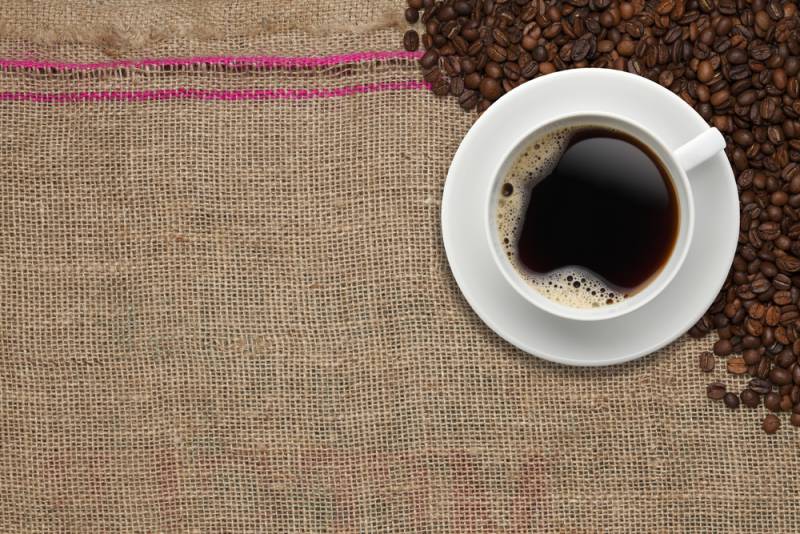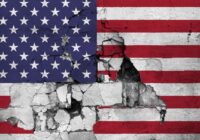High demand for coffee has pushed growers toward sun or “reduced-shade” plantations that require more water and pesticides while reducing biodiversity.
The humble coffee bean is one of the most important and actively traded commodities in the world. It doesn’t take more than a glance at American coffee consumption stats to understand why. In a 2015 Gallup poll, 64% of Americans reported drinking at least one cup of coffee per day and 2.7 on average. The United States imports about 2.8 billion pounds of green coffee every year, and Americans consume just over nine pounds of coffee per capita annually.
If you’re anything like me, your morning coffee is a necessity. So early in my graduate career I decided to do a little research on it. I found a fascinating and somewhat disturbing story encompassing ecology, economics, globalization and finance—one that all coffee drinkers should know about.
Out with shade-grown
Beginning in the 1970s, many Latin American coffee farmers began to convert their farms to what is called “technified” production systems. In response to disease outbreaks in Brazil during the early 1970s, large growers began to search for new, heartier coffee varietals.
Encouraged by local and national governments—along with development aid agencies like USAID—many of these farmers began to cut down the trees that create the canopy under which coffee has traditionally been grown and plant in their place varietals specially bred to grow in full sun. Those selected were heartier and more resistant to disease and pests—and were also less affected by the application of chemical fungicides.
By the end of the 1990s, sun or reduced-shade cultivation systems accounted for almost 70% of Colombia’s land area devoted to coffee and 40% of Costa Rica’s.
These technified plots can be up to five times more productive than shade systems, but also come with significant environmental consequences. Shade coffee farms have proven to harbor some of the highest levels of biodiversity, particularly for insects and migratory birds, among all agro-ecosystems (those whose products are used for human consumption).
Furthermore, a recent study found that, from seed to mug, each cup of coffee uses about 140 liters of “virtual water,” which takes into account water used for irrigation, processing and shipping, as well as for consumption. This figure is significantly higher for coffee grown in full-sun versus that grown under shade cover.
Since it’s grown out of the more balanced ecosystem of the shaded grove, technified coffee requires much higher levels of chemical pesticides to combat pests. And since technified plants produce so much more coffee and don’t have the benefit of using recycled plant matter, farmers need to apply more fertilizer to make up for the loss of soil nutrients from year to year. The application of these chemicals can have detrimental long-term effects on a region’s biodiversity and soil health.
Unequal exchange
At its core, technification applies the industrial-agricultural model to coffee production, and in many ways it has intensified exploitative relationships between coffee consumers in the global North and coffee producers in the global South—what are colloquially called “First World” and “Third World” countries, respectively.
Social scientists have been studying these lopsided North-South dynamics for well over a century, but the topic has recently been recast with a distinctly “green” bent.
Environmental economists and sociologists have developed the concept of ecologically unequal exchange, which holds that developed countries externalize a significant portion of their “ecological footprint” to developing ones. Put more simply, industrialized countries use the ecological carrying capacity of periphery countries to offset the environmental impact of their own consumption.
Large statistical studies have confirmed this. Sociologist James Rice found that, among lower- and lower-middle-income countries, those with higher proportions of trade export to northern countries had lower domestic resource consumption net of other factors.
Similarly, Andrew Jorgenson’s study confirms these results, while also adding an interesting finding: that the relationships between northern importers and southern exporters became more unequal from 1975 to 2000. More than one-third of the countries in Jorgenson’s sample were major coffee exporters, including production giants like Colombia and Brazil and other important players such as Costa Rica, Kenya, Vietnam and Mexico that obtain a significant portion of gross domestic product (GDP) from coffee export revenues.
Another recent study by sociologist Kelly Austin found that, even after controlling for overall agricultural export-dependence, a country’s reliance on coffee exports as a significant share of GDP “produces unique and especially harmful patterns [of] deforestation, hunger and schooling in poor nations in comparison to other forms of agricultural production.”
Placing coffee at the center of highly unequal trade relationships between North and South, these studies show that commodity coffee production is rife with multiple forms of socioecological exploitation.
Better way?
Several movements have sprung up to address many of these inequities by raising awareness and offering a more equitable alternative.
Fair trade certification provides economic stability for farmers by providing them a base price for their coffee, requiring unionization or cooperative business structures, and encouraging them to adopt more sustainable farming practices. A newer movement, direct trade, has buyers send representatives directly to coffee farms to observe their practices and develop long-term trading relationships.
Both of these tend to return more money to producers and provide them incentives to help lessen their coffee’s impact. Yet both depend on consumer demand and center around the willingness (and ability) of affluent Westerners to pay higher prices for their coffee. This demand can dry up quickly, leaving producers with lots of high-quality, expensive coffee that no one wants.
Longer-lasting change will need to come from international agreements and local economic and political changes in the coffee lands themselves. But for now, these alternative-trading systems are a step in the right direction to address the socioecological exploitation plaguing the industry today.
*[This article was originally published by The Conversation.] ![]()
The views expressed in this article are the author’s own and do not necessarily reflect Fair Observer’s editorial policy.
Photo Credit: Sumire8 / Namphon2U / Shutterstock.com
 We bring you perspectives from around the world. Help us to inform and educate. Your donation is tax-deductible. Join over 400 people to become a donor or you could choose to be a sponsor.
We bring you perspectives from around the world. Help us to inform and educate. Your donation is tax-deductible. Join over 400 people to become a donor or you could choose to be a sponsor.
Support Fair Observer
We rely on your support for our independence, diversity and quality.
For more than 10 years, Fair Observer has been free, fair and independent. No billionaire owns us, no advertisers control us. We are a reader-supported nonprofit. Unlike many other publications, we keep our content free for readers regardless of where they live or whether they can afford to pay. We have no paywalls and no ads.
In the post-truth era of fake news, echo chambers and filter bubbles, we publish a plurality of perspectives from around the world. Anyone can publish with us, but everyone goes through a rigorous editorial process. So, you get fact-checked, well-reasoned content instead of noise.
We publish 2,500+ voices from 90+ countries. We also conduct education and training programs
on subjects ranging from digital media and journalism to writing and critical thinking. This
doesn’t come cheap. Servers, editors, trainers and web developers cost
money.
Please consider supporting us on a regular basis as a recurring donor or a
sustaining member.
Will you support FO’s journalism?
We rely on your support for our independence, diversity and quality.







